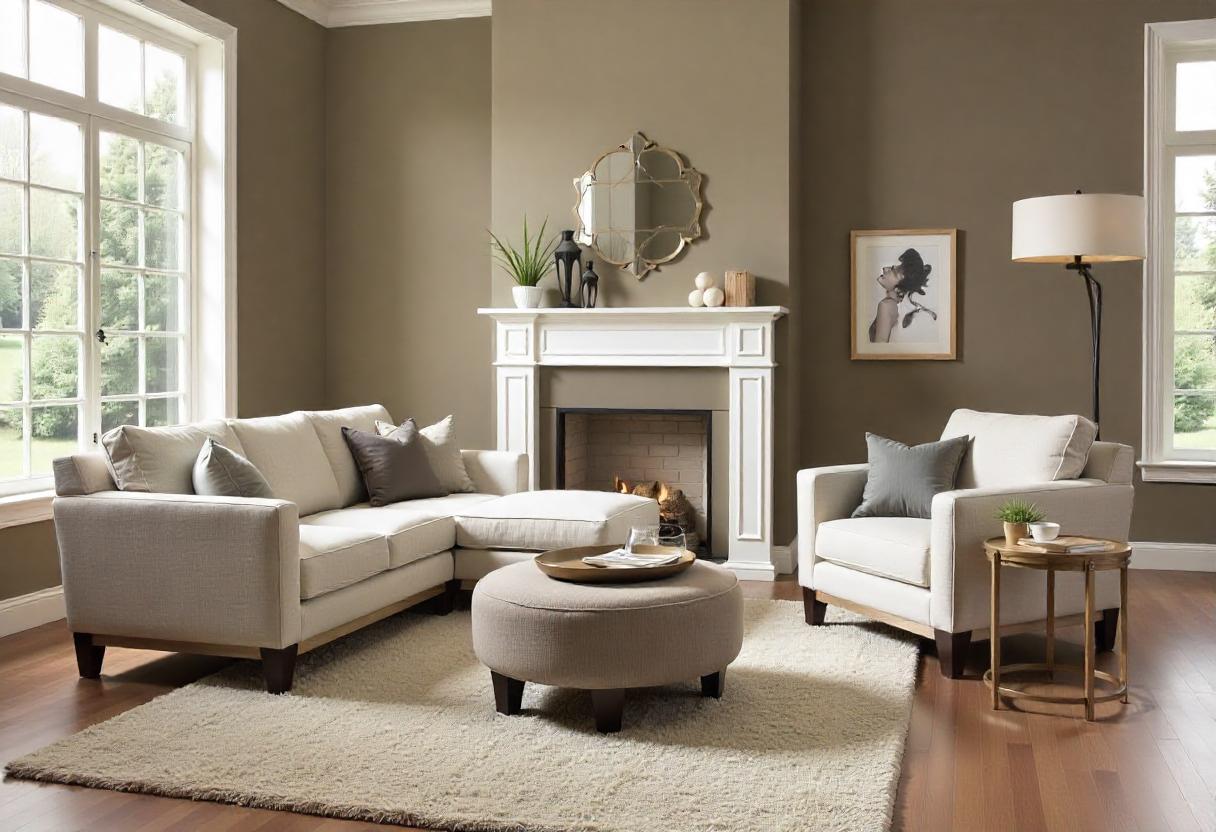
Styling your furniture is more than just placing pieces in a room; it’s about creating a cohesive, inviting space that reflects your personality and lifestyle. Whether you’re moving into a new home or just looking to refresh your current decor, expert tips can make all the difference. This guide will explore various strategies to help you style your furniture beautifully and effectively.
Understanding Your Space
Assess Your Room Dimensions
Before diving into styling, it’s crucial to understand the dimensions of your space. Measure the room to determine how much furniture you can comfortably fit. Keep in mind the following tips:
- Use a Floor Plan: Create a floor plan to visualize furniture placement. Online tools or apps can help you design your space before you move any heavy pieces.
- Leave Room for Flow: Ensure there’s enough space for movement. Aim for at least 30 inches of walking space between furniture pieces.
Identify Your Style
Next, identify your personal style. This will guide your furniture choices and arrangement. Here are some popular styles to consider:
- Modern: Clean lines, minimalistic decor, and functional pieces.
- Bohemian: A mix of textures, colors, and vintage items for a relaxed, eclectic vibe.
- Industrial: Raw materials like metal and wood combined with rustic accents.
- Traditional: Classic shapes and rich colors with elegant details.
Choosing the Right Furniture
Select Key Pieces
Invest in key furniture pieces that define your space. These often include:
- Sofas: A comfortable sectional sofa is a focal point in your living room. Choose a style that suits your aesthetic and complements the room’s layout.
- Coffee Tables: A coffee table not only serves a practical purpose but also adds style. Consider materials that contrast or complement your sofa.
- Accent Chairs: These can introduce a pop of color or an interesting shape to the room.
Mix and Match Styles
Don’t be afraid to mix and match different furniture styles. Combining modern pieces with vintage finds can create an engaging and layered look. Here are some tips for successful mixing:
- Color Coordination: Use a consistent color palette across different styles to unify the space.
- Balance Proportions: Pair larger furniture pieces with smaller ones to create visual balance. For instance, a big sectional sofa can be complemented by sleek accent chairs.
Arranging Your Furniture
Create Focal Points
Every room should have a focal point, something that draws the eye and anchors the space. Common focal points include:
- Fireplaces: Arrange furniture around a fireplace for a cozy gathering area.
- Artwork: A large piece of art or a gallery wall can serve as a stunning focal point.
- Windows: If you have a beautiful view, arrange your furniture to highlight it.
Define Spaces
In open-concept living areas, use furniture arrangement to define different spaces. Here’s how:
- Area Rugs: Place area rugs under furniture to delineate different zones, such as a dining area or a reading nook.
- Furniture Arrangement: Position furniture to create pathways that guide guests through the space. For example, a sofa can face a pair of chairs to form a conversation area.
Utilize Vertical Space
Don’t forget about the vertical space in your room! Here’s how to take advantage of it:
- Bookshelves: Tall bookshelves can draw the eye upward and create a sense of height.
- Wall Decor: Use wall art or floating shelves to add dimension and interest at different heights.
Styling Tips for Specific Rooms
Living Room
The living room is often the heart of the home. Here are expert tips for styling this space:
- Layer Textures: Use various materials like velvet cushions, knitted throws, and leather sofas to create a cozy and inviting atmosphere.
- Incorporate Plants: Bring life to your living room with indoor plants. They add color and freshness and can improve air quality.
Bedroom
Your bedroom should be a relaxing retreat. Here’s how to style it effectively:
- Focus on Bedding: Invest in high-quality bedding and layer different textures for a luxurious feel. Add decorative pillows and a throw blanket for added comfort.
- Nightstands: Style your nightstands with essential items like a lamp, a book, and a decorative item to create a personal touch.
Dining Room
The dining room is where you gather with family and friends. Here are some tips for styling:
- Table Centerpieces: Use a stylish centerpiece like a vase of fresh flowers or a bowl of fruit to add interest to your dining table.
- Lighting: Consider a statement chandelier or pendant light that complements the dining table and enhances the atmosphere.
Adding Accessories
Layering with Textiles
Textiles play a significant role in styling furniture. Here’s how to incorporate them:
- Cushions and Throws: Use a mix of patterns and textures to add warmth and comfort to your furniture.
- Curtains: Choose curtains that complement your furniture and room colors. Floor-length curtains can create an illusion of height.
Incorporating Artwork
Artwork can elevate your furniture styling. Here are some tips:
- Gallery Walls: Create a gallery wall with a mix of frames and artwork to add personality to your space.
- Large Art Pieces: A single large piece of art can serve as a dramatic focal point and elevate the overall design.
Using Lighting
Lighting is crucial in creating the right ambiance. Consider the following:
- Table Lamps: Use stylish table lamps on side tables or consoles to add warmth and functionality.
- Floor Lamps: A floor lamp can serve as a design statement while providing additional light.
Color Schemes and Patterns
Choosing a Color Palette
The right color palette can significantly impact your space’s feel. Here are some tips:
- Monochromatic Schemes: Using varying shades of a single color can create a sophisticated and cohesive look.
- Contrasting Colors: Pairing contrasting colors can add excitement and energy to a space.
Incorporating Patterns
Patterns can add visual interest to your furniture styling. Here’s how to do it effectively:
- Mix Patterns: Combine different patterns in cushions, rugs, and artwork. Just ensure they share a common color to maintain harmony.
- Accent Pieces: Use patterned accent pieces, such as throw pillows or rugs, to introduce color without overwhelming the space.
Creating Cohesion
Establishing a Theme
Having a consistent theme throughout your home helps create cohesion. Here are some common themes to consider:
- Scandinavian: Focus on minimalism with light colors and natural materials.
- Rustic: Incorporate warm tones and natural textures for a cozy, inviting atmosphere.
- Contemporary: Emphasize clean lines and neutral palettes with bold accents.
Transitioning Between Rooms
When styling your furniture, ensure smooth transitions between rooms. Here’s how:
- Color Flow: Maintain a consistent color palette throughout your home to create a harmonious flow.
- Style Consistency: While each room can have its unique elements, maintaining a similar style throughout (e.g., modern, traditional) helps create a cohesive look.
Conclusion
Styling your furniture can transform your home into a personal sanctuary that reflects your unique taste. By understanding your space, choosing the right furniture, and following expert tips, you can create a beautifully styled environment. Remember, the key is to mix functionality with aesthetics while ensuring that each piece serves a purpose and contributes to the overall design.
FAQs
Q1: What is the best way to mix different furniture styles?
A1: The best way to mix furniture styles is by maintaining a consistent color palette and balancing proportions. This creates a cohesive look while allowing each piece to shine.
Q2: How can I make a small room feel larger?
A2: Use lighter colors, mirrors, and multi-functional furniture to create an illusion of space. Keeping furniture arranged to allow for flow will also help the room feel more open.
Q3: What are some affordable ways to style furniture?
A3: You can style your furniture affordably by using thrifted or vintage pieces, DIY projects, and accessorizing with textiles like throws and cushions to refresh the look without breaking the bank.
Q4: How do I choose the right colors for my furniture?
A4: Consider the mood you want to create. Lighter colors make a space feel airy and open, while darker colors add depth and coziness. Look at color wheels and palettes for inspiration, and think about how colors complement each other.
Q5: Should I stick to one theme throughout my home?
A5: While it’s not necessary to have a single theme, maintaining a cohesive style or color palette across rooms helps create a harmonious flow. Each room can have its own character, but tying them together visually can enhance the overall aesthetic.
